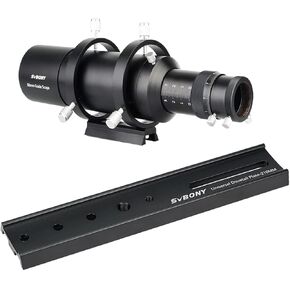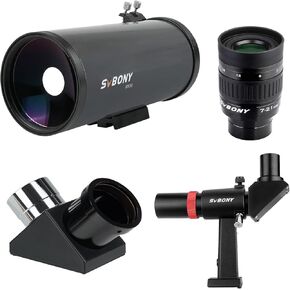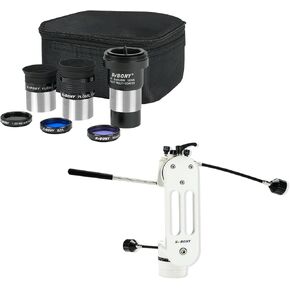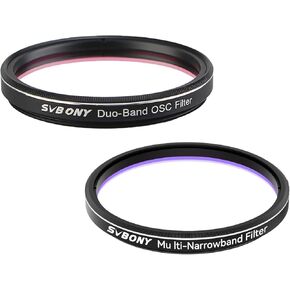- Shopping, made easy.
- /
- Get the app!
This spare filter holder is designed for SVBONY SV226 filter drawers,It provides you with a more convenient combination. CNC integrated molding; more precise production process; strong and sturdy.With this filter drawer holder, you will be more convenient to use filters for deep sky photography; can accommodate 2-inch round, mounted filters, along with other 2-inch round filters that measure 50.8 mm wide and 7.5 mm thick. SV240 Multi-Narrowband Galaxy & Nebula Filter NIR Near-infrared Light Pollution Filter; A new galaxy and nebula filter intended for shooting not only nebulae, but also galaxies by the use of the transmittance around the near infrared region. Considering the high quantum efficiency (QE) characteristics of the latest cameras (such as IMX585 and IMX464) in the near-infrared region and taking into consideration that this region is less susceptible to artificial light pollution, the filter adds high transmission in the near-infrared (NIR) band. This spectrum design improves the image signal-to-noise ratio and contrast by capturing signal in visible bands and NIR regions while maintaining good colour balance and being easier to manage in post-processing.
 SVBONY SV219 Dovetail Mount Plate 210mm Bundle with SV106 Guide Scope 60mm with Helical Focuser(2 Items)
KWD 35.500
SVBONY SV219 Dovetail Mount Plate 210mm Bundle with SV106 Guide Scope 60mm with Helical Focuser(2 Items)
KWD 35.500
 SVBONY MK90 Telescope for Adults Astronomy Bundle with SV135 Zoom Eyepiece, SV221 90 Degree Diagonal Mirror and SV182 6x30 Finderscope, Catadioptric Telescope for Planet Moon Observation Combination
KWD 101.500
SVBONY MK90 Telescope for Adults Astronomy Bundle with SV135 Zoom Eyepiece, SV221 90 Degree Diagonal Mirror and SV182 6x30 Finderscope, Catadioptric Telescope for Planet Moon Observation Combination
KWD 101.500
 SVBONY SV225 Alt-Azimuth Mount, Adjustable Angle Alt-Azimuth Mount Bundle with SV233 7PCS Telescope Accessory Kit, Telescope Accessories for Astronomical Observations
KWD 66
SVBONY SV225 Alt-Azimuth Mount, Adjustable Angle Alt-Azimuth Mount Bundle with SV233 7PCS Telescope Accessory Kit, Telescope Accessories for Astronomical Observations
KWD 66
 SVBONY SV220 2'' Dual-Band Nebula Filter, H-Alpha and O-III Narrowband Filter for One-Shot Color Cameras Bundle with SV240 Multi-Narrowband Galaxy Nebula Filter, Telescope Filters for Astrophotography
KWD 99.500
SVBONY SV220 2'' Dual-Band Nebula Filter, H-Alpha and O-III Narrowband Filter for One-Shot Color Cameras Bundle with SV240 Multi-Narrowband Galaxy Nebula Filter, Telescope Filters for Astrophotography
KWD 99.500